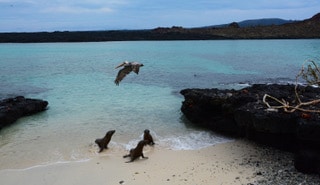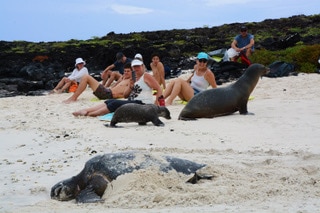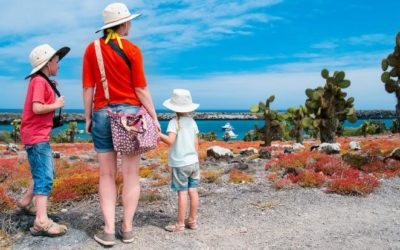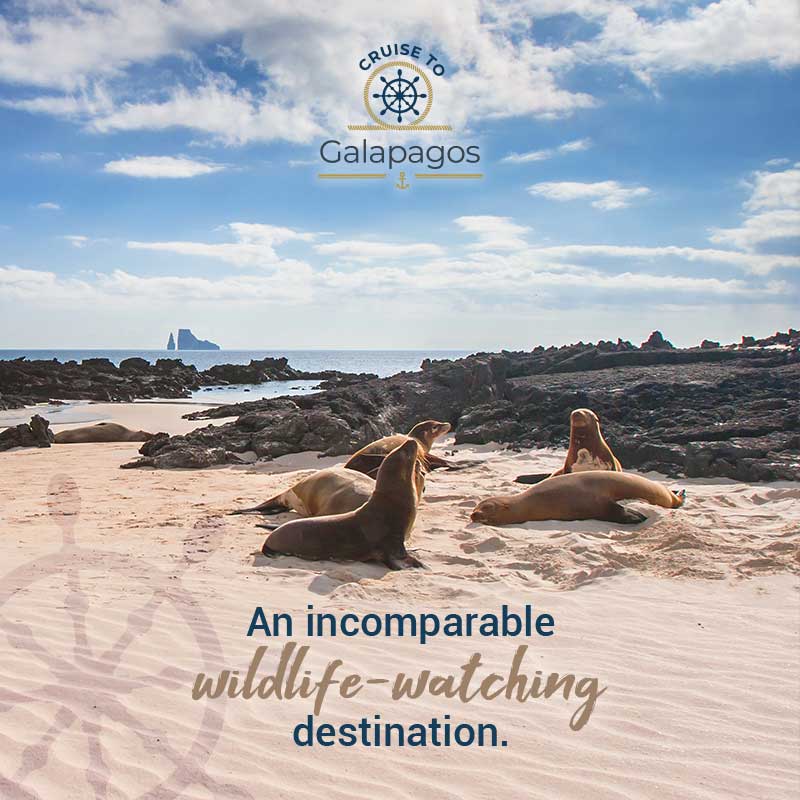The Galapagos Islands in Covid-19 times
Stay up to date with our most recent news and updates
I feel privileged to be one of the few Galapagos Islands Naturalists Guides who has been fortunate to be guiding in the early months of 2021. I’ve been working on the M/Y Galaxy and M/C Alya, two fantastic ships which take you to the most remote areas of the Galapagos Islands, while enjoying a great level of security, comfort, and excellent service.
The few travelers I was guiding are just a fraction of what used to visit the islands in pre-Covid times, but as soon as the trip starts you can see in their eyes that they are aware of how lucky they are to be here. They are experiencing the islands like those visitors who came in the early ’80s when you would not see other humans, but just animals and empty wilderness. The feeling of being alone in almost every visitor site, the sensation of not seeing other ships, even in the distance, feels you with awe and it’s hard to describe.
And the Galapagos Islands are as beautiful as ever. The beaches are full with healthy sea lion pups, the bird colonies have a lot of juveniles looking good and in general, the wildlife seems to be in great health. Many people claim that this is because 2020 was a year with no tourists, but I don’t agree. I am sure that this is because last year happened to be a relatively cold “La Niña” year. And cold conditions in the Galapagos are good for all the marine fauna, especially for the most iconic animals that everyone dreams to see: sea lions, penguins, boobies, albatross, marine iguanas, flightless cormorants… all of them increase their populations when the waters are cooler. This is because cold waters mean more food in the ocean.

The pandemic has been a disaster for the tourist industry, but also conservation in the islands. Without tourism and the money it brings, many on the conservation programs to protect the native Galapagos fauna and flora had to be put on standby.
Some of them because park rangers and scientists could not go out to the field, others because the donations and the fees tourists pay to visit the islands got dramatically reduced, meaning that the money available for conservation dried as well.
Without money, some of the programs to eradicate invasive species had to be stopped, allowing introduce species to reproduce, regain their ground, and threaten the endemic species everyone had worked so hard to save.
Tourism has always been highly regulated in the Galapagos, so the benefits of it greatly exceed its negative aspects.
I’m sitting on a gorgeous coral-sand beach at the “Sombrero Chino” islet. Right next to us a female sea turtle rests on the sand after having laid eggs during the night. She’s seen us but does not seem to care as she warms under the early morning sun.
A little further, a female sea lion comes out of the water followed by her pup who wants to feed desperately. She takes her time and sniffs our towels as she walks by us until she finds a comfortable spot.

A few minutes later two Galapagos penguins dart through the turquoise water in front of the beach as they chase anchovies.
“This is fantastic!” I am thinking… “things have not changed at all !!!”. I wish my family could be here right now.
Luis Die Dejean
Galapagos Naturalist Guide
DON’T STOP YOUR WANDERLUST!
📌 Discover our best deals, to the Galapagos Islands! Click here.
If you liked this post, share it with your friends and subscribe to our newsletter to keep up to date with interesting news from Galapagos 🐢, Ecuador 🇪🇨 , and other magical destinations in South America 🌎.
RELATED POST
Best Time to visit the Galapagos Islands
Discover the best time to visit Galapagos. Learn about the weather, wildlife and the best time for activities both on land and in the water.
How to Book a Galapagos Last Minute Cruise?
Learn the advantages and disadvantages, the best time, and other important tips for booking a Galapagos last minute cruise.



